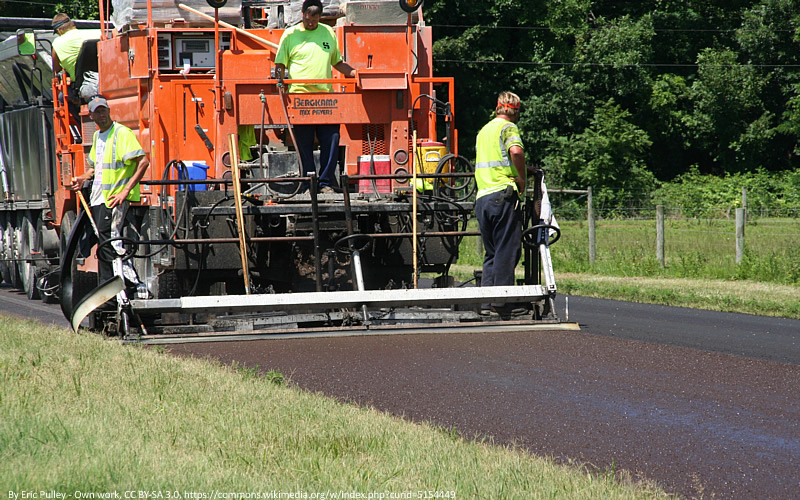
By Chris Dixon, special to Statehouse Report | South Carolina has the nation’s highest rate of rural road traffic fatalities, and some of its worst maintained rural roads and bridges.
Yet on Monday, S.C. Gov. Henry McMaster announced his intention to spend a significant portion of $4.6 billion in anticipated federal highway infrastructure dollars intended for rural roads to be used for widening interstates instead.
“The Federal Highway Administration office says, so far, they are not able to spend money on widening roads,” McMaster said in a speech to the North Charleston Rotary Club. “They want to put it on rural roads. Well, we need to put it on widening the interstate highways.”
McMaster used his Monday speech to call for President Joe Biden to offer more flexibility in how South Carolina is permitted to use infrastructure dollars. But is widening interstates at the expense of rural and surface roads the best use of the infrastructure windfall?
Best use?
 In 2020, the nonprofit highway research organization TripNet found that in addition to the deadliest roads overall in the United States, South Carolina has the nation’s deadliest rural roads. A TripNet study found that 3.44 people die per hundred million vehicle miles traveled on our rural roads. This is nearly three times the national average of 1.12 and 26 percent higher than second place fatality “non-winner,” Oregon, at 2.92. (Our overall nation’s worst fatality figure in 2020 was 1.78 per hundred million vehicle miles)
In 2020, the nonprofit highway research organization TripNet found that in addition to the deadliest roads overall in the United States, South Carolina has the nation’s deadliest rural roads. A TripNet study found that 3.44 people die per hundred million vehicle miles traveled on our rural roads. This is nearly three times the national average of 1.12 and 26 percent higher than second place fatality “non-winner,” Oregon, at 2.92. (Our overall nation’s worst fatality figure in 2020 was 1.78 per hundred million vehicle miles)
South Carolina’s rural roads, the report said, are plagued by dangerous curves and shoulder drop-offs as well as structurally deficient bridges that have in many cases had their maximum weights reduced or been closed outright. Of 9,395 bridges in the state, 499, or 5.3 percent are classified as structurally deficient. More than 1,983 are posted for load.
When a “load posted” bridge’s weight is reduced, trucks, school buses, tractors and even emergency vehicles must be redirected. In rural areas in particular, this can mean detours of many miles — and the dumping of more large vehicles onto our overcrowded Interstates. South Carolina has already identified more 2,000 bridges — most of them non-interstate — that need $2 billion in repairs.
To its credit, the S.C. Department of Transportation does have a Rural Roads Safety Project that has been addressing some of the state’s most pressing rural road issues. But as TripNet’s study reveals, the situation is beyond critical and far beyond the scope of the $124 million currently budgeted for the program.
A few choice words
Edisto Island retiree Fred Palm, former executive director of the Association of Inspectors General, penned a Tuesday letter to some state senators in which he excoriated the governor for prioritizing wider interstates over repairing and raising flood-prone non-Interstate roads. Palm argued that a robust network of safe, off-interstate roads not only helps to disperse interstate traffic, but serve as vital escape routes for hurricanes and disasters. This is particularly vital, he pointed out, because on Tuesday, the National Oceanic and Atmospheric Administration released a study that predicted a foot in sea level rise over the next 30 years with over 2 feet by 2100.

“Further compounding the observed conditions proposed to be cured by widening is the South Carolina transportation policy failures,” Palm wrote. “South Carolina has yet to evolve from building highways to providing transportation solutions. Charleston, Columbia, Greenville and Rock Hill lack the needed broad-scale mass transit investments.”
“Of course,” he continued, “The urban roads will further clog, giving rise to the incorrect policy cure of widening. No amount of realistic and affordable widenings will remedy these conditions.”
Attention needed
Anyone who has been jammed up along one of South Carolina’s interstates — from the choke point at intersection of Georgia’s modern, four-lane stretch of I-95 onto Jasper County’s woeful, pothole-ridden excuse for a highway, to the truly jammed and dangerous intersections of Interstates 26 and 526, knows that stretches of South Carolina Interstate need serious attention. Indeed since last February, of the 1,090 deaths on South Carolina roads, 48 happened on I-26, 32 on I-95 and 21 occurred on I-77. But clearly, Interstates are only part of the picture.
Also Tuesday, rather than offering to further combine a massive tax windfall on critical and lagging state infrastructure and schools, McMaster instead said he intends to reduce income taxes by over $1 billion over the next five years.
Policy question for the legislature: Might some of this disappearing tax revenue not be better spent on education and keeping South Carolinians moving along our backroads — and out of cemeteries?
Chris Dixon is senior editor of the Charleston City Paper. Have a comment? Send to: feedback@statehousereport.com.
















 We Can Do Better, South Carolina!
We Can Do Better, South Carolina!
You have absolutley got it correct. I agree why should we who live on and near surface roads suffer bad pot holes, road edges that have crumbled so badly that you have no chance other than to end up in a ditch or even a pond somewhere. If it’s specified for rural roads, heck do what the grant says. Let the Feds fix the interstates that are a heck of a lot safer now than our rural roads.
Year after year we go to Florida for a month and dread going through S.C.. The roads are awful. This year in
the stretch north of GA. we were only able to make 35mph for hours. I guess the folks in Columbia think
only out of state travelers use I-95 but I saw many SC plates, what a bunch of dumb asses. We went through
Columbia in December and there was no problems with the roads there.